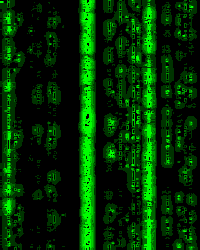A 39 percent increase in cases has the circuit's officials looking for solutions
The National Law Journal
Thursday, November 18, 2004
Pro se litigants have created a logjam in the 9th U.S. Circuit Court of Appeals, which has seen a 39 percent increase in the last few years in cases filed by those who represent themselves.
The 9th Circuit Task Force on Self-Represented Litigants recently made a number of recommendations to relieve the situation, ranging from using law students to help handle the load -- for academic credit -- to granting firms success-based fee awards for handling the cases pro bono.
Currently, pro se cases constitute roughly one-third of all civil filings in the 9th Circuit. Pro se cases have swollen from 3,607 in 2000 to roughly 5,000 in 2003.
On a national scale, pro se cases account for nearly half -- 43.5 percent -- of all appeals, but that number has stayed steady in other circuits in recent years, according to the Administrative Office of the U.S. Courts.
The 4th Circuit, which has the largest proportion of pro se litigants among the circuits, handles the caseload by putting them through a three-tier system that vets the cases as soon as they are in the system.
FACTORS BEHIND THE DELUGE
Officials in the 9th Circuit say pro se cases have become burdensome because they tie up court resources, as self-represented litigants are less familiar with the law and legal procedure, and need court staff to explain many details. Moreover, they argue, the potential impact on staff resources is of particular concern as the judiciary struggles to cope with funding shortfalls.
"One of the biggest problems that a self-represented litigant presents is the same problem that is presented by self-instructed plumbers and electricians and carpenters ... just as men and women would have a difficult time learning those trades, they also have a great deal of difficulty learning everything you need to know in order to effectively present a case," said U.S. District Judge James K. Singleton of Alaska, who chaired the task force.
The 9th Circuit task force issued a long list of recommendations designed to help the court better manage pro se cases, and reduce the amount of judge time in screening them.
Among the recommendations are:
Districts should coordinate with law schools and consider using law school students to help represent pro se litigants, with students possibly earning credit for their work.
Districts should make it easy for law firms to accept pro bono cases by either pitching pro se cases as good training for young lawyers, issuing success-based fee awards or reimbursing attorneys' out-of-pocket expenses.
The 9th Circuit is waiting for feedback on the recommendations, which will then be forwarded to the Judicial Council of the 9th Circuit.
Judge Paul Niemeyer, who sits on the 4th Circuit, noted of the 9th Circuit that it's "hard for a court that size to function."
Niemeyer notes that in his circuit, which is smaller, pro se cases are not unmanageable, even though they account for 54 percent of all appeals. According to federal judiciary statistics, the 4th Circuit has the largest percentage of pro se appeals in the country.
The 4th Circuit has a three-tier method for dealing with pro se cases, Niemeyer said.
First, a staff attorney reviews a self-representing litigant's appeal and gives an oral or written presentation to a three-judge panel, which either recommends it for further review or dismisses it. At the second phase, staff lawyers send a lengthy memo to a three-judge panel recommending the case for oral argument.
At the third phase, a lead judge has moved the case to oral argument, and at that point assigns an attorney to argue it.
Niemeyer notes that very rarely are self-litigants allowed to give their own oral arguments in court. In his 14 years on the bench, he has only seen it happen twice.
"When a person argues his own cause he gets emotional. They lose sight of the big picture," he said. "It just doesn't work."
Niemeyer said that the 4th Circuit often uses law school students and professors to argue pro se cases.
"Those cases are worked much harder than in the private sector," he said. "We get the benefit that, number one, the professor is supervising the whole thing and, number two, the student is really putting the effort into it."

 | " Natural Cures They Don't Want You to Know About " ~ by Kevin Trudeau ~ CLICK HERE TO ORDER THIS INCREDIBLE BOOK ! (The Natural Cures Book As Seen on TV) |

